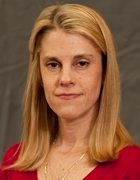Workforce of the future is in the hands of the CIO
You couldn’t go far at the MIT Sloan CIO Symposium held recently in Cambridge, Mass., without hearing about the workforce of the future and how the CIO will help develop what some people are calling Workforce 2.0.
The old corporate regime, dating back to the days when generals were brought in to run companies post-World War II, is no longer working, but such top-down, command-and-control corporate cultures are still common.
What is needed from the C-suite down is a culture of transparency that encourages input from everyone in the company. That entails a lot of technology platforms, from social media and mobility, to real-time analytics and reports that “mere mortals” can actually decipher, according to Brian Halligan, co-founder and CEO of HubSpot Inc.
“The CIO will work with the CEO to fundamentally transform how we communicate, transform the culture, and … work to pull the workforce into the postmodern world,” Halligan said during a panel at the MIT event. “Everything needs to be rewritten, and the CIO will be the one to pull the CEO over that line and help develop the employee workforce of the future, by putting in place critical hardware and software skills that employees need now and five years from now.”
This disruption of the “Old World Order” is taking many shapes. At New York Life Retirement Plan Services, CIO Neal Ramasamy and CEO David Castellani plan to “destroy the desktop” and replace it with smartphones and dumb terminals.
In a conversation about the changing role of IT, Castellani said he envisions a more flexible, self-service computing environment for the workforce of the future — no surprise, considering his background as a co-founder of Mi8, a Software-as-a-Service email and messaging platform provider.
As far as proprietary applications? “Throw them out the windows,” Castellani said in a panel at the MIT event. “They don’t add business value; all they do is create more headaches. Focus on disruptive and aggressive ways to get rid of things like this.”
At Raytheon Co., Chief Information Security Officer Michael Daly and his team are building a private cloud so Raytheon employees and the company’s partners can collaborate in a dynamic environment. The end result will be a new approach to collaboration between and among Raytheon employees and partners to develop products for various government defense branches.
The message from some attendees and panelists at the MIT event was not only that corporate culture had to change to foster the workforce of the future, but also that IT systems and methodologies are the backbone of that culture and workforce. CIOs need to develop transparent, fluid communication environments, with teams that can be spun up and disbanded as needed; and they must be willing to let go of entrenched systems.
